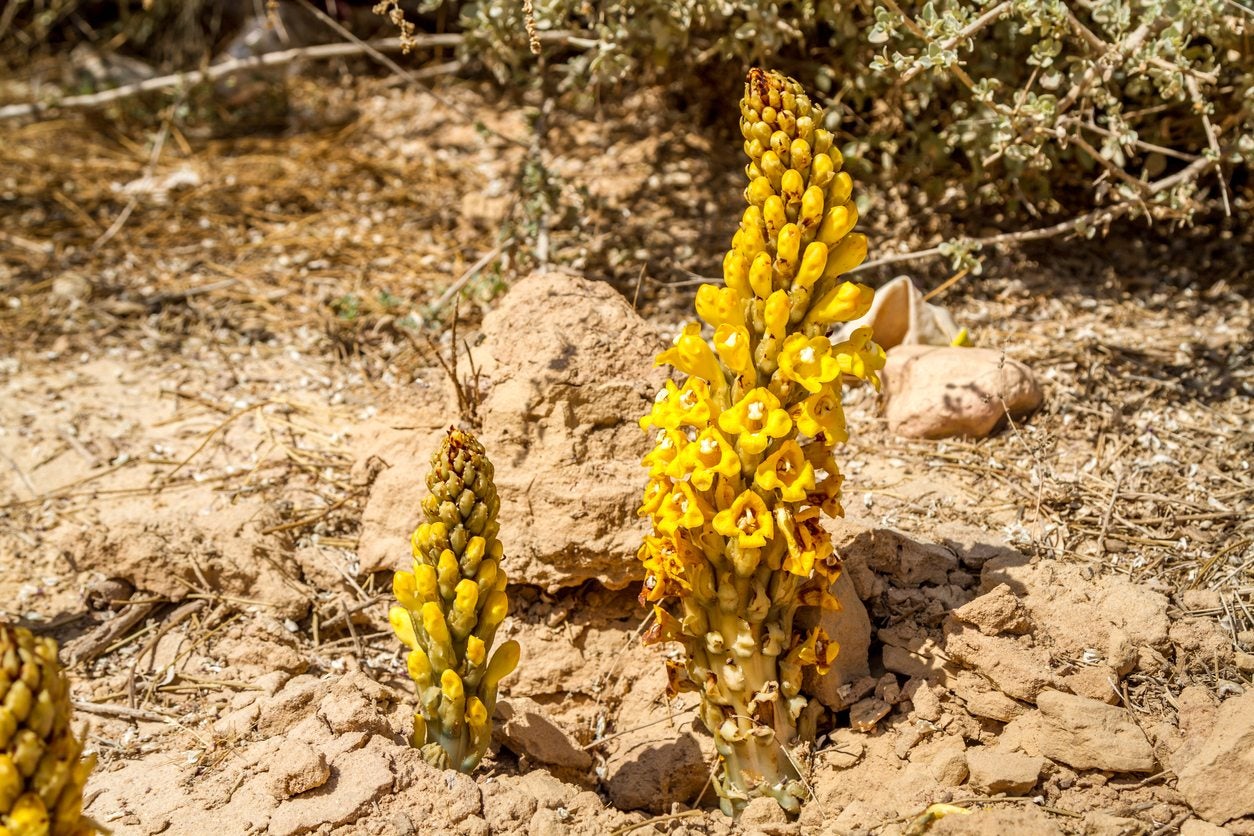Desert Hyacinth Information – Learn About The Cultivation Of Desert Hyacinths


What is desert hyacinth? Also known as fox radish, desert hyacinth (Cistanche tubulosa) is a fascinating desert plant that produces tall, pyramid-shaped spikes of dazzling yellow blooms during the spring months. What makes desert hyacinth plants so interesting? Desert hyacinth plants manage to survive in extremely punishing conditions by parasitizing other desert plants. Read on for more desert hyacinth information.
Desert Hyacinth Growing Info
Desert hyacinth thrives in climates that receive as little as 8 inches (20 cm.) of water per year, usually during the winter months. Soil is usually sandy and salty in nature. Since desert hyacinth is unable to synthesize chlorophyll, the plant displays no green parts, and the flower extends from a single, whitish stalk. The plant survives by sucking water and nutrients from saltbush and other desert plants via a thin root extending from an underground tuber. The root can stretch to other plants several feet (or meters) away. Desert hyacinth is found in many of the world’s deserts, including the Negev Desert in Israel, the Taklamakan Desert in northwest China, the Arabian Gulf Coast, and the arid regions of Pakistan, Rajasthan, and Punjab. Traditionally, the plant has been used to treat a range of conditions, including contusions, low fertility, decreased sex drive, constipation, high blood pressure, memory problems, and fatigue. It is often dried to a powder and mixed with camel’s milk. Desert hyacinth is a rare and endangered species, but unless you can provide the ideal growing conditions, cultivation of desert hyacinth in a home garden is extremely difficult.
Sign up for the Gardening Know How newsletter today and receive a free copy of our e-book "How to Grow Delicious Tomatoes".

A Credentialed Garden Writer, Mary H. Dyer was with Gardening Know How in the very beginning, publishing articles as early as 2007.